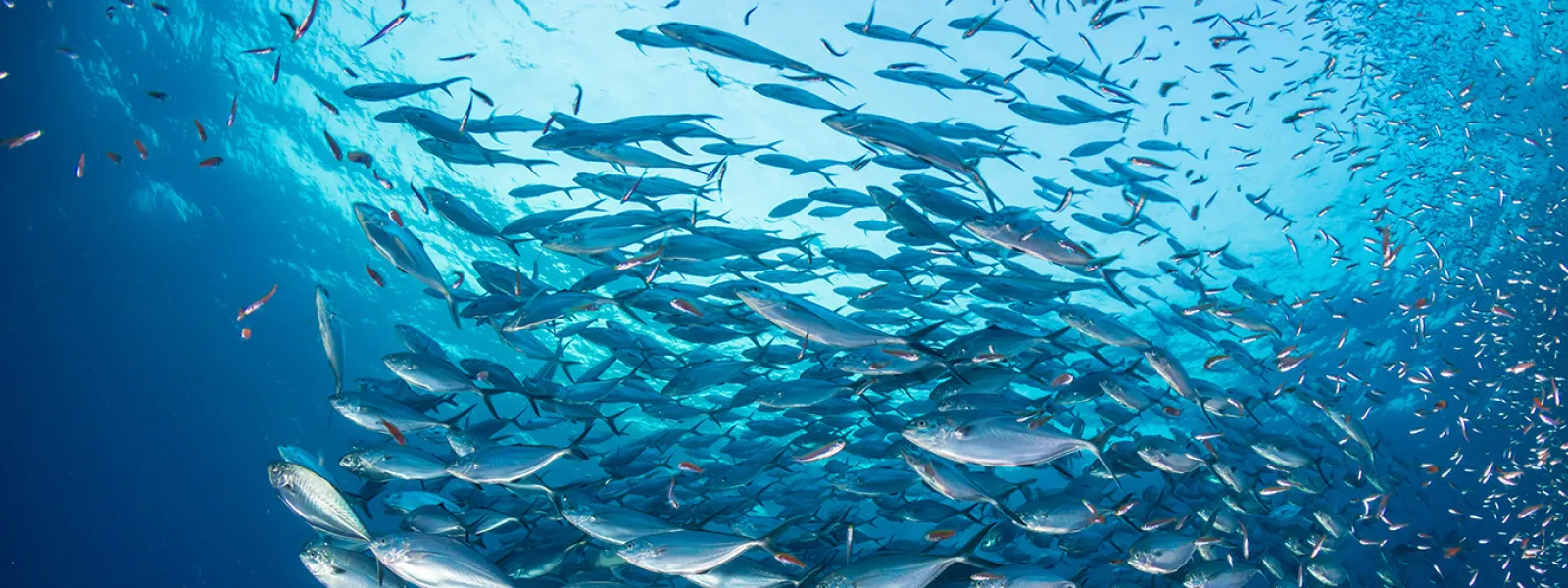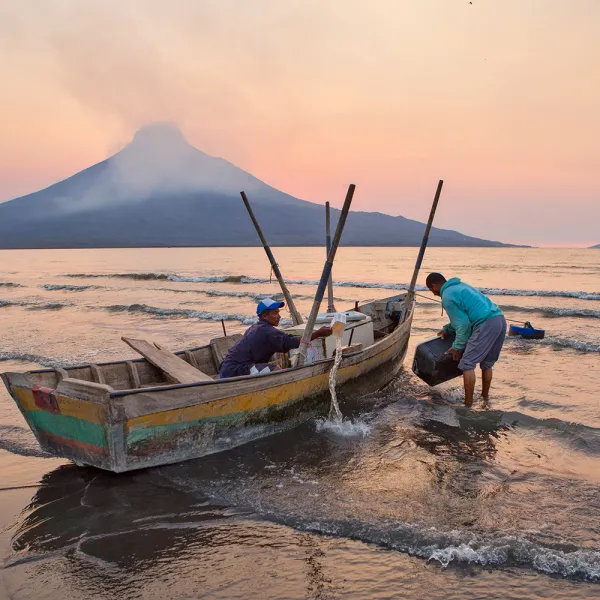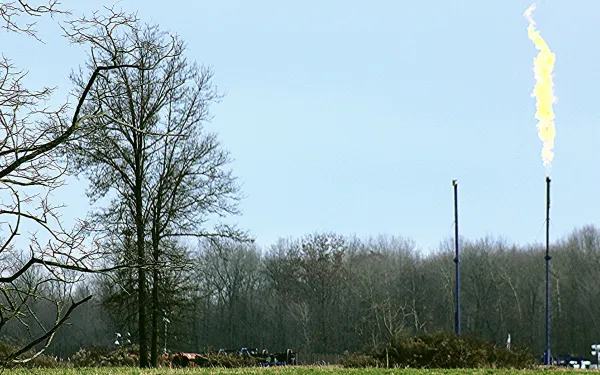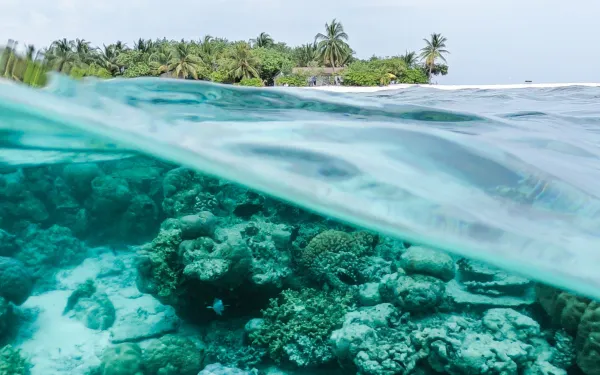
Project
ShutterstockTowards an end to subsidies that promote overfishing
Overfishing is one of the main problems for the health of our ocean. And the provision of negative subsidies to the fishing sector is one of the fundamental causes of overfishing.
Fishing subsidies are financial contributions, direct or indirect, that public entities grant to the industry.
Depending on their impacts, they can be beneficial when they promote the growth of fish stocks through conservation and fishery resource management tools. And they are considered negative or detrimental when they promote overfishing with support for, for example, increasing the catch capacity of a fishing fleet.
It is estimated that every year, governments spend approximately 22 billion dollars in negative subsidies to compensate costs for fuel, fishing gear and vessel improvements, among others.
Recent data show that, as a result of this support, 63% of fish stocks worldwide must be rebuilt and 34% are fished at "biologically unsustainable" levels.
Although negotiations on fisheries subsidies, within the framework of the World Trade Organization, officially began in 2001, it was not until the 2017 WTO Ministerial Conference that countries committed to taking action to reach an agreement.
This finally happened in June 2022, when member countries of the World Trade Organization reached, after more than two decades, a binding agreement to curb some harmful fisheries subsidies. It represents a fundamental step toward achieving the effective management of our fisheries resources, as well as toward ensuring global food security and the livelihoods of coastal communities.
The agreement reached at the 12th WTO Ministerial Conference provides for the creation of a global framework to reduce subsidies for illegal, unreported and unregulated fishing; subsidies for fishing overexploited stocks; and subsidies for vessels fishing on the unregulated high seas. It also includes measures aimed at greater transparency and accountability in the way governments support their fisheries sector.
The countries agreed to continue negotiating rules to curb other harmful subsidies, such as those that promote fishing in other countries' waters, overfishing and the overcapacity of a fleet to catch more fish than is sustainable.
If we want to have abundant and healthy fishery resources, it is time to change the way we have conceived fishing until now. We must focus our efforts on creating models of fishery use that allow for long-term conservation.
Partners:


How fracking's methane leaks aggravate climate change
I’ve seen them more times than I can remember, but the shock never fades: ten-foot-high flames burning off gas at the BP processing plant in Whiting, Indiana. The facility is close to where I grew up, so we’ve had a lot of time to marvel at the flare stacks. My sister thought they were volcanoes when she was little and, in my family, the name has stuck. Converting waste methane to carbon dioxide (CO2) through flaring is common practice in oil and gas production. This makes “volcanoes” a familiar feature of drilling and hydraulic fracturing, or fracking, fields. The sight of stacks spewing CO2 directly into the air is both visually striking and enraging: a visual metaphor for a world run on extractive, dirty energy. And yet, when it comes to fracking, the volcanoes and their carbon emissions aren’t even the biggest problem. That which is most dangerous is often hardest to see—invisible, in this case. Fracking’s worst air pollution actually occurs through methane leaks. Methane is a greenhouse gas whose global warming potential is 86 times greater than carbon dioxide over a 20-year period, according to the Intergovernmental Panel on Climate Change. It leaks stealthily at every point in the gas supply chain into our atmosphere, undetectable without advanced equipment and frequent tests. According to NASA, the oil and gas industry is responsible for the global rise in methane emissions, beating even landfills and dairy production. Many of these emissions come from leaking pipes attached to fracked gas wells. While many of fracking’s damages—the contamination of water tables, an increase in man-made earthquakes—are well documented, fracking’s air pollution is a more difficult battle to fight. There are no convenient visuals of tap water set on fire or flattened homes. But the fact that we can’t see methane leaking into the air doesn’t make its impact any less intense: diffuse toxic particles grip the throat like so many invisible hands; methane causes nosebleeds and asthma; gas leaks squeeze the brain into dizzying headaches and seizures; toxic additives cause babies to be born prematurely with low birth weight and life-threatening defects. Leaking methane is also of particular concern when it comes to climate change. When just less than 2 percent of a pipeline’s total carried methane leaks into the air, the gas loses its supposed “cleaner” climate advantage over even coal. Recent studies show that U.S. fracking fields leak at tremendously uneven rates, some up to a whopping 12 percent. In other words, only a small number of wells are responsible for an extreme amount of contamination. But this also means that we already have part of the solution: fixing leaks at these super-polluting fields would be a huge boon for climate regulation. Leak detention and repair requires frequent and careful oversight, but it is also cost-effective, and often actually pays for itself. Gas companies can patrol their own distribution lines, looking for and repairing leaks. Pneumatic pipeline controllers can be replaced with better, low-bleed controllers. This extra care, however, is exactly what fracking’s proponents fight against: the gas industry in the United States has long denied and diminished the severity of leaking pipelines. Like the greenhouse gas pollution that causes it, climate change is a slow-paced disaster. It is a long, diffuse emergency that, in a sound-byte world, isn’t dramatic enough for short-term elections and news cycles, and usually isn’t brought up until it’s too late. Alternatives to fracking But times are changing. And the solution to a warming world isn’t just about fixing leaks. We can’t just mitigate a life-threatening system; we have to end it. Instead of perpetuating our dependence on gas, we must invest in a just transition and move into economically sustainable forms of energy, like solar and wind. Gas delivery systems and their maintenance are as expensive as they are toxic, and will soon become obsolete. We must fight for better regulation of our present system, while building up alternatives for a better tomorrow. This is particularly important in parts of the world that are only now starting to embrace fracking. While somewhat ubiquitous in the global North, fracking has only just begun in Latin America, where roughly 5,000 wells have popped up in the past few years. Frontline communities and human rights defenders from across the Americas have fought hard to win bans or restrictions on fracking. They urge that their nations not fall for fracking’s trap—harms would be amplified by lax regulation and further aggravate climate change. In October they testified before the Inter-American Commission on Human Rights on the harm fracking has caused to communities across Latin America. Liliana Ávila, a senior attorney at AIDA, explained that fracking-induced pollution impacts basic human rights, and that environmental defenders often face extreme violence when protecting their territories from the gas industry. Part of the battle for a global and just transition towards a sustainable, equitable energy economy is being able to recognize those harms that are harder to see—including those that are invisible at first. It’s the quiet harms that unfold over long time spans that are catching up to us now.
Read more
Putting my heart in the conservation of wetlands
Coral reefs are my favorite wetlands. They’re full of so many colors and shapes, and simply teeming with life. When I’m underwater, my heart is full of peace and excitement, as I see myself surrounded by so many forms of life, so many species living together. As a marine biologist, I’ve had the opportunity to scuba dive in a variety of countries and see many of these beautiful ecosystems up close. Of all my dives, the ones I enjoyed most were those I did—for work and for pleasure—in the Bay Islands of Honduras. As a recent college graduate and volunteer with the Atlantic and Gulf Rapid Reef Assessment Program, I was in charge of monitoring the countless organisms that live in or on the reefs—seaweed, sea urchins, lobsters, queen snails, and so many others. Without a doubt, my time diving in the Cayos Cochinos sparked my personal and professional journey. Since then, I’ve set out to protect these magical ecosystems, vital to all life this planet. My current role, as scientific advisor to AIDA, uses science to strengthen the legal arguments employed to protect these and other at-risk natural environments in Latin America. Wetlands, vital and at-risk In addition to coral reefs, wetlands—characterized by the presence of water—include lakes and rivers, underground aquifers, swamps and marshes, grasslands, peat bogs, estuaries and deltas, mangroves, and sea grasses. Wetlands act as the “kidneys” of the planet because they recycle water and waste, retain sediment and nutrients, reduce erosion, and absorb carbon dioxide from the atmosphere, in turn mitigating climate change. However, it’s estimated that since 1700 we’ve lost nearly 87 percent of our wetlands at a speed three times greater than the loss of our natural forests. This has caused a drastic reduction in biodiversity, affecting 81 percent of continental species and 36 percent of marine and coastal species. Among the greatest threats to our wetlands are contamination by garbage, wastewater and industrial pollution; changes in land use; agricultural runoff, erosion and climate change. What’s more, global warming is increasing the temperature of the oceans, raising sea levels, and melting the poles. According to the Intergovernmental Panel on Climate Change, an increase of 1.5°C in global temperature could kill almost 90 percent of the world’s coral reefs—an irreversible and heartbreaking loss. Taking action to save wetlands Given this frightening global scenario, urgent action is required to protect our planet’s wetlands. In fact, there are many ways we can begin to do so immediately, such as: Creating restoration campaigns for vital ecosystems like mangroves and coral reefs. Declaring natural protected areas, to conserve wetlands and the species that depend on them. Developing policies that allow for the rational use of wetlands, where conservation is prioritized. Prohibiting the destruction of these ecosystems in any type of project, be it tourism, development or infrastructure. Establishing water treatment plans to prevent drainage and runoff from contaminating wetlands. Every year, on February 2, we celebrate World Wetlands Day, commemorating the signing of the Ramsar Convention, the only intergovernmental treaty for the conservation and rational use of our planet’s wetlands. This year’s celebration is focused on wetlands and climate change, inviting us all to reflect on the value of our wetlands, the critical services they provide, and urgency with which we must protect them. We are not powerless in the face of climate change. Saving our wetlands may just be the first step toward saving our planet, and ourselves.
Read more
Putting my heart in the conservation of wetlands
Coral reefs are my favorite wetlands. They’re full of so many colors and shapes, and simply teeming with life. When I’m underwater, my heart is full of peace and excitement, as I see myself surrounded by so many forms of life, so many species living together. As a marine biologist, I’ve had the opportunity to scuba dive in a variety of countries and see many of these beautiful ecosystems up close. Of all my dives, the ones I enjoyed most were those I did—for work and for pleasure—in the Bay Islands of Honduras. As a recent college graduate and volunteer with the Atlantic and Gulf Rapid Reef Assessment Program, I was in charge of monitoring the countless organisms that live in or on the reefs—seaweed, sea urchins, lobsters, queen snails, and so many others. Without a doubt, my time diving in the Cayos Cochinos sparked my personal and professional journey. Since then, I’ve set out to protect these magical ecosystems, vital to all life this planet. My current role, as scientific advisor to AIDA, uses science to strengthen the legal arguments employed to protect these and other at-risk natural environments in Latin America. Wetlands, vital and at-risk In addition to coral reefs, wetlands—characterized by the presence of water—include lakes and rivers, underground aquifers, swamps and marshes, grasslands, peat bogs, estuaries and deltas, mangroves, and sea grasses. Wetlands act as the “kidneys” of the planet because they recycle water and waste, retain sediment and nutrients, reduce erosion, and absorb carbon dioxide from the atmosphere, in turn mitigating climate change. However, it’s estimated that since 1700 we’ve lost nearly 87 percent of our wetlands at a speed three times greater than the loss of our natural forests. This has caused a drastic reduction in biodiversity, affecting 81 percent of continental species and 36 percent of marine and coastal species. Among the greatest threats to our wetlands are contamination by garbage, wastewater and industrial pollution; changes in land use; agricultural runoff, erosion and climate change. What’s more, global warming is increasing the temperature of the oceans, raising sea levels, and melting the poles. According to the Intergovernmental Panel on Climate Change, an increase of 1.5°C in global temperature could kill almost 90 percent of the world’s coral reefs—an irreversible and heartbreaking loss. Taking action to save wetlands Given this frightening global scenario, urgent action is required to protect our planet’s wetlands. In fact, there are many ways we can begin to do so immediately, such as: Creating restoration campaigns for vital ecosystems like mangroves and coral reefs. Declaring natural protected areas, to conserve wetlands and the species that depend on them. Developing policies that allow for the rational use of wetlands, where conservation is prioritized. Prohibiting the destruction of these ecosystems in any type of project, be it tourism, development or infrastructure. Establishing water treatment plans to prevent drainage and runoff from contaminating wetlands. Every year, on February 2, we celebrate World Wetlands Day, commemorating the signing of the Ramsar Convention, the only intergovernmental treaty for the conservation and rational use of our planet’s wetlands. This year’s celebration is focused on wetlands and climate change, inviting us all to reflect on the value of our wetlands, the critical services they provide, and urgency with which we must protect them. We are not powerless in the face of climate change. Saving our wetlands may just be the first step toward saving our planet, and ourselves.
Read more